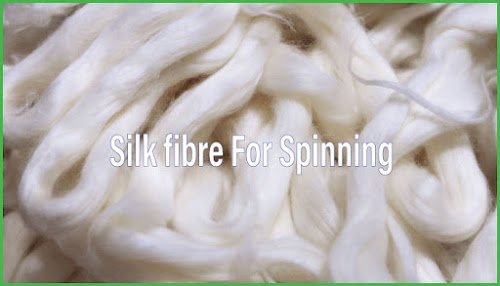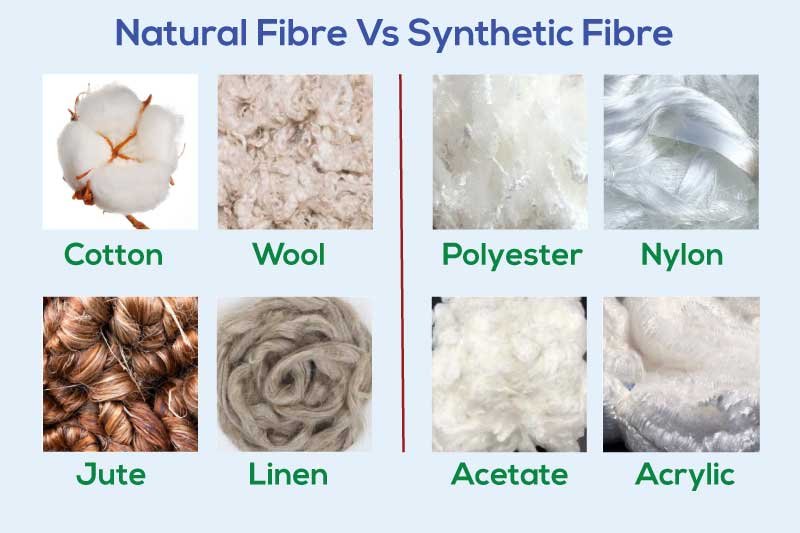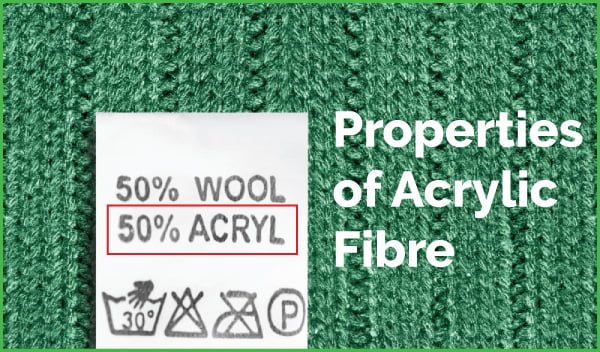Physical and Chemical Properties of Silk
Last updated on October 18th, 2023 at 12:08 pm
Silk had its origin to China for more than 4000 years ago. It was a properly guarded secret in China. Several centuries passed before its knowledge has transferred into Japan via Korea. India was also the seat of silk and sericulture. A single cocoon is made of an incessant filament of silk which the silkworm extrudes from its body and throws about itself, layer upon layer, making a thick, smooth symmetrical wall.

Along with the silk filament, in the silk warm there exists a gummy substance known as sericin. This is the cement that glues the silk filament into a firm, hard cocoon.
Physical Properties of Silk
Tenacity: The silk filament is strong because of its linear polymers and crystalline nature (parallel to one another). This allows more hydrogen bonds to be formed in a continuous manner. When the silk is wet, it loses its strength. This is because of water molecules hydrolyzing a great number of hydrogen bonds and in the process weakening the silk polymer.
Elastic-plastic nature: Because of crystalline nature, the silk polymer cannot have much movement, if silk textile is in stretched state. Stretching ruptures a significant number of hydrogen bonds. When stretching ceases; the polymers do not return to their original position but remain in their new positions. This disorganizes the polymer system of silk which is seen as a distortion and wrinkling or creasing of the silk material.
Hydroscopic nature: Since silk has a very crystalline polymer system, it is less absorbent than wool, however it is satisfactorily absorbent.
The greater crystallinity of silk’s polymer system allow fewer water molecules, to enter than does the more amorphous polymer system of wool.
Thermal: Silk is very sensitive to heat. This is because of dearth of any covalent cross-links in the polymer system of silk. The existing peptide bonds, salt linkage and hydrogen bonds of silk polymer system tend to break down once the temperature goes beyond 100 C. In the beginning this polymer fig mentation will only result in surface discoloration of silk fibre.
Besides, long exposure to heat can result in scorching. The brown to black discoloration of silk is because of formation of minute particles of carbon. Scorching makes the fibre weak. Silk will burn in the path of flame. After removal from flame it will sputter and ultimately extinguish itself. It leaves a crisp ash and provides the smell of burning hair or feathers.
Chemical Properties of Silk
Effect of acids: It is degraded readily by acids. This is due to there are no covalent cross-link between the silk polymers. Therefore perspiration which is acidic will cause soon breakdown of polymer system of silk. This is noticed as weakening of silk textile.
Effect of alkalis: The alkaline solution causes the silk filament to swell. This is because of partial separation of polymers by action of alkali. Salt linkages, hydrogen bonds and Vander wall force hold the polymer system together. All these forces are hydrolyzed by alkali which results in dissolution of silk filament occurs in alkaline solution.
Effect of sunlight and weather: The dearth of covalent cross-link in the polymer system of silk makes it affected by sunlight. The ultraviolet rays of the sun cause peptide bonds to break which causes polymer degradation on the surface of fibres. These degradation products cause the silk fibre to not only absorb more light but to scatter the incident light to a great extent. The result is yellowing or dulling of silk.
Colorfastness: Silk has obvious affinity for dyes. The luster of silk causes its dyed and printed silk texture to appear bright.
Miscellaneous: Silk is a poor conductor of electricity which results in buildup of static charges. Silk can be warm depending upon the construction since it has low heat conductivity. Silk is resistant to attack by mildew and is comparatively resistant to bacteria.
Silk in use: Silk has been the queen of fibres for centuries. It is used for luxury fabrics and high fashion cloths and items but its durability extends its use to sports-wear and other contemporary applications. It is preferable to dry-clean silk but certain silks can also be hand laundered. Minimum handling and good rising to make sure all soap washed off are the precautions. It should be dried in shade or at ironing, medium temperature should be used. Bleaching should be done only with perborate of hydrogen peroxide or chlorine will destroy the material.
These are weakened by body peroxide and may fade colors. Many deodorants and antiperspirants contain aluminum chloride which changes silk.
You may also like: Properties of Jute Fibre




Thank you for sharing this article with me. It helped me a lot and I love it.